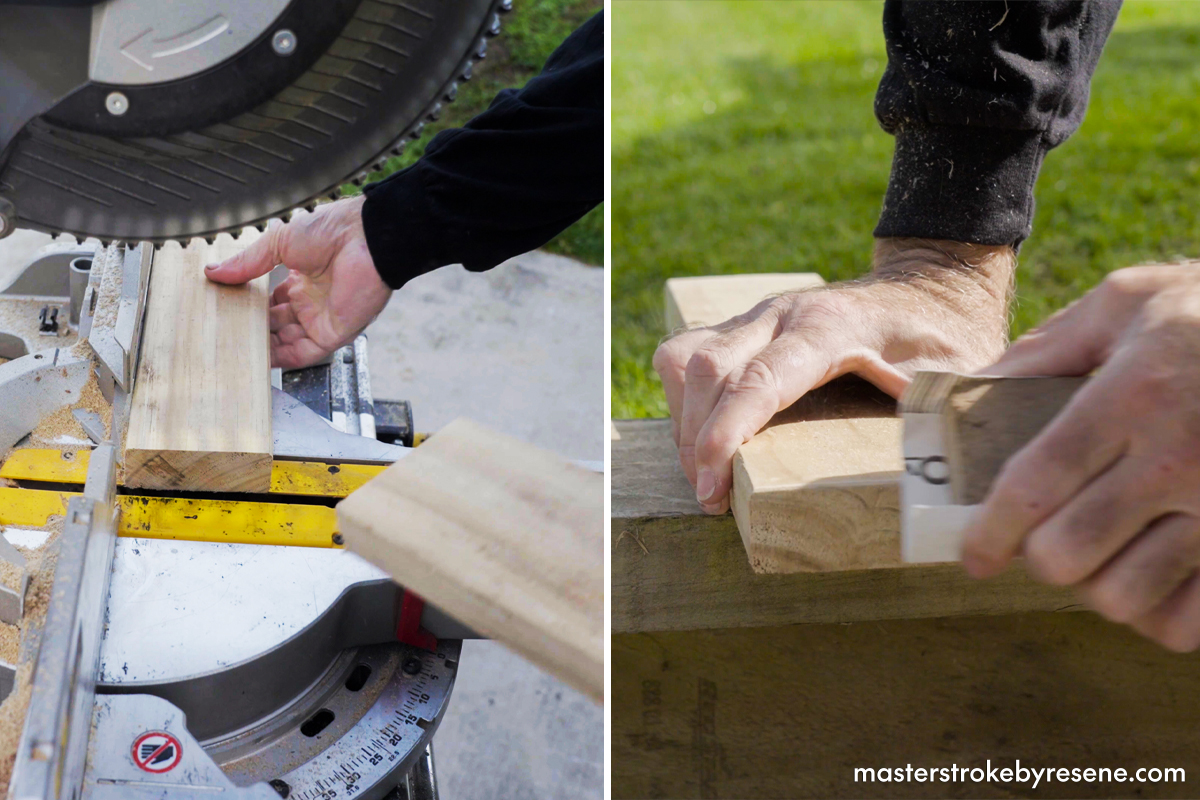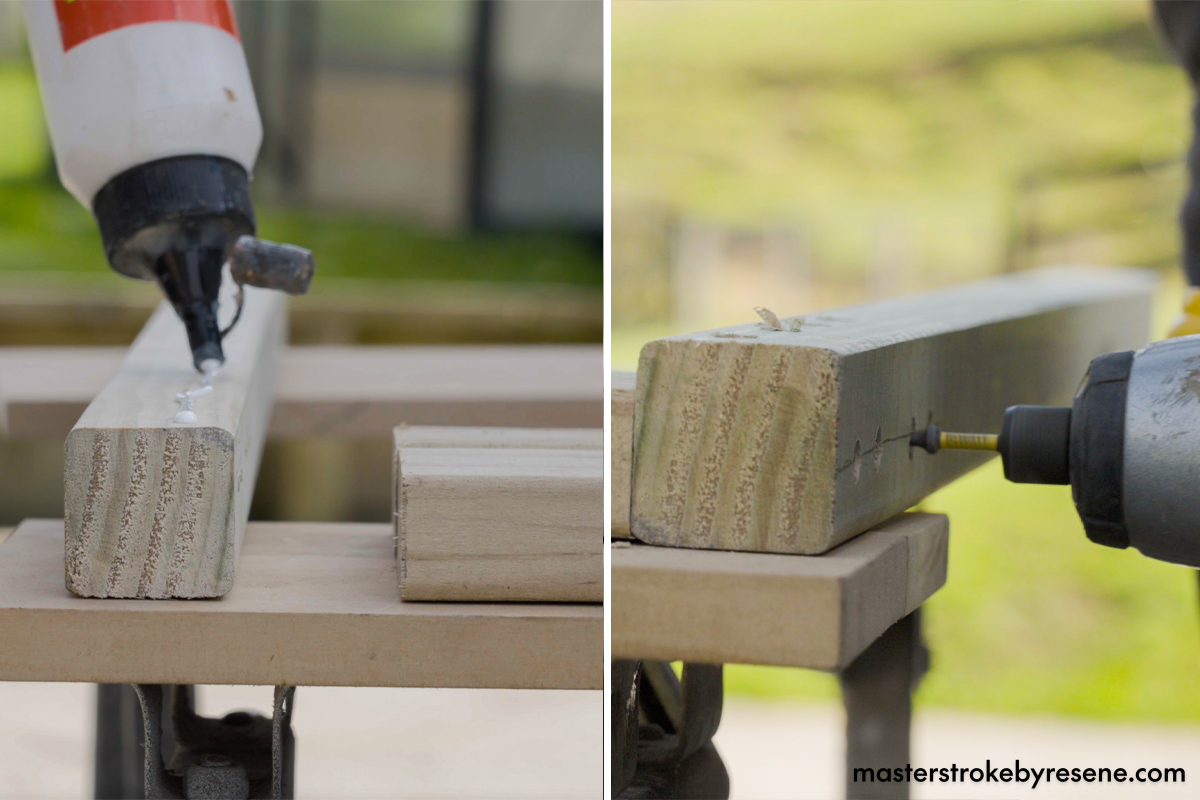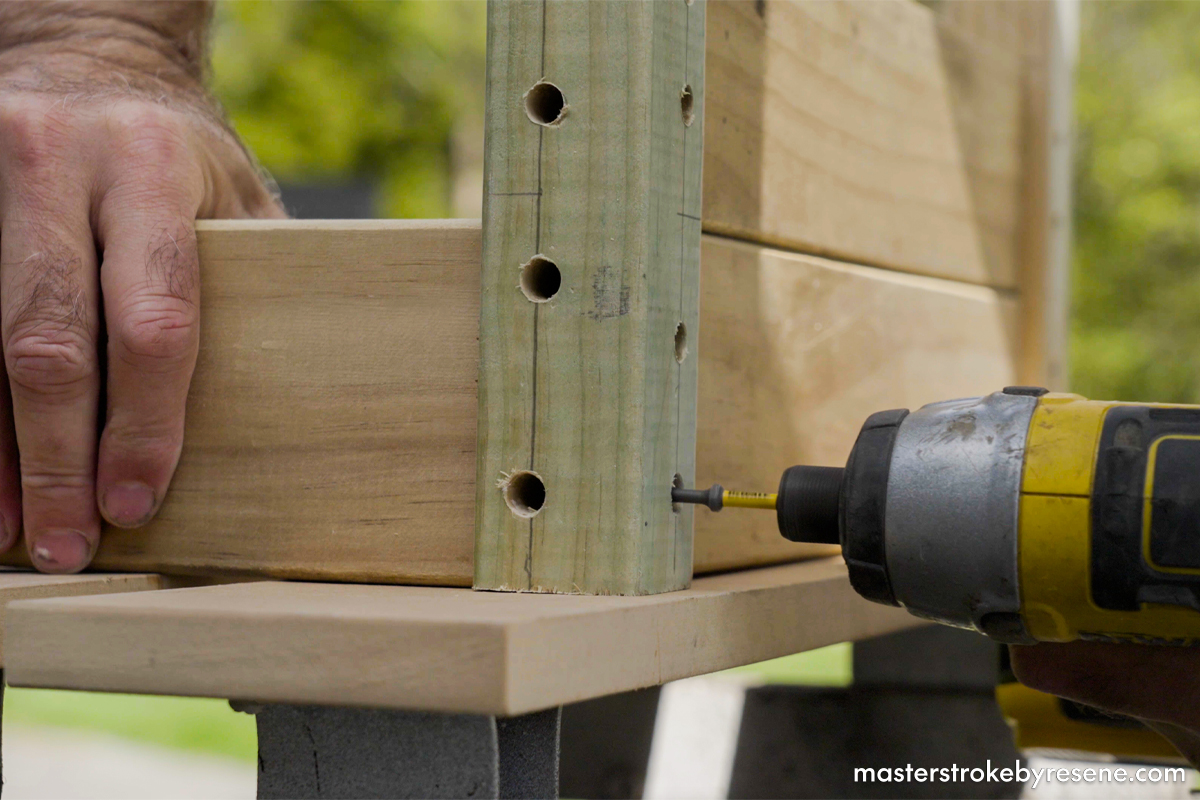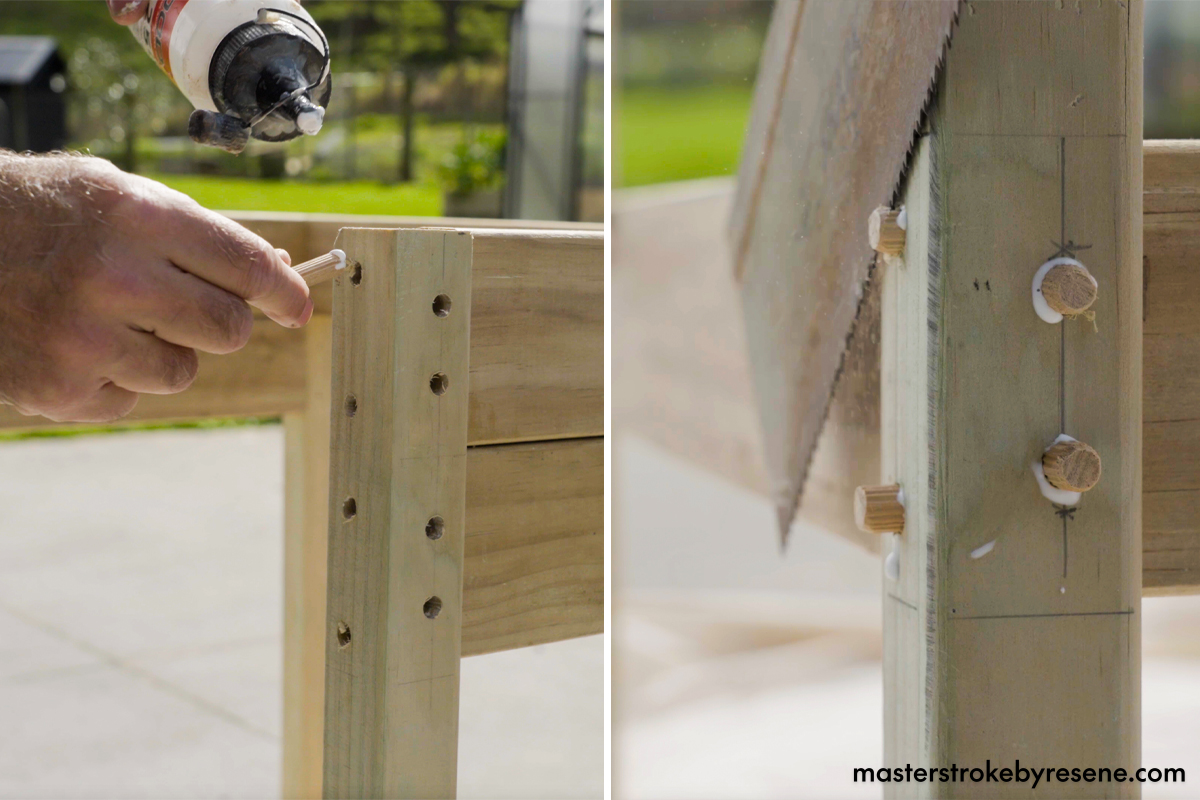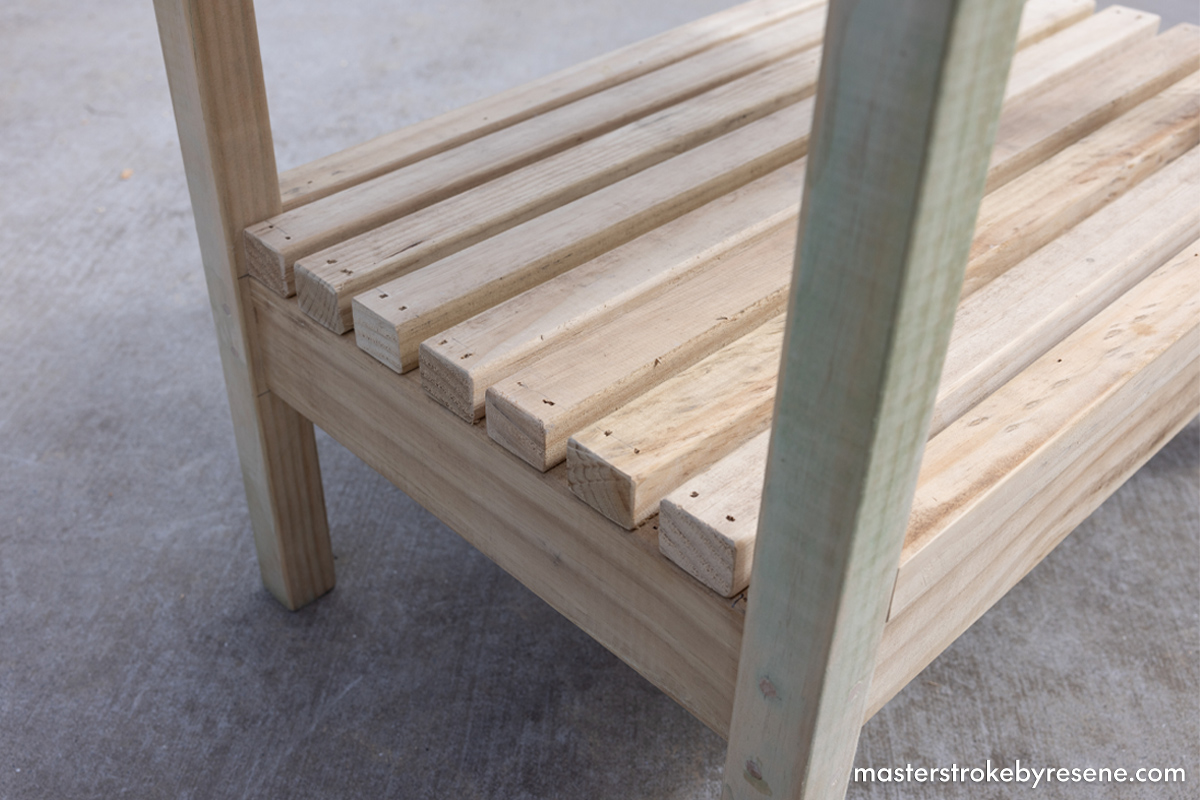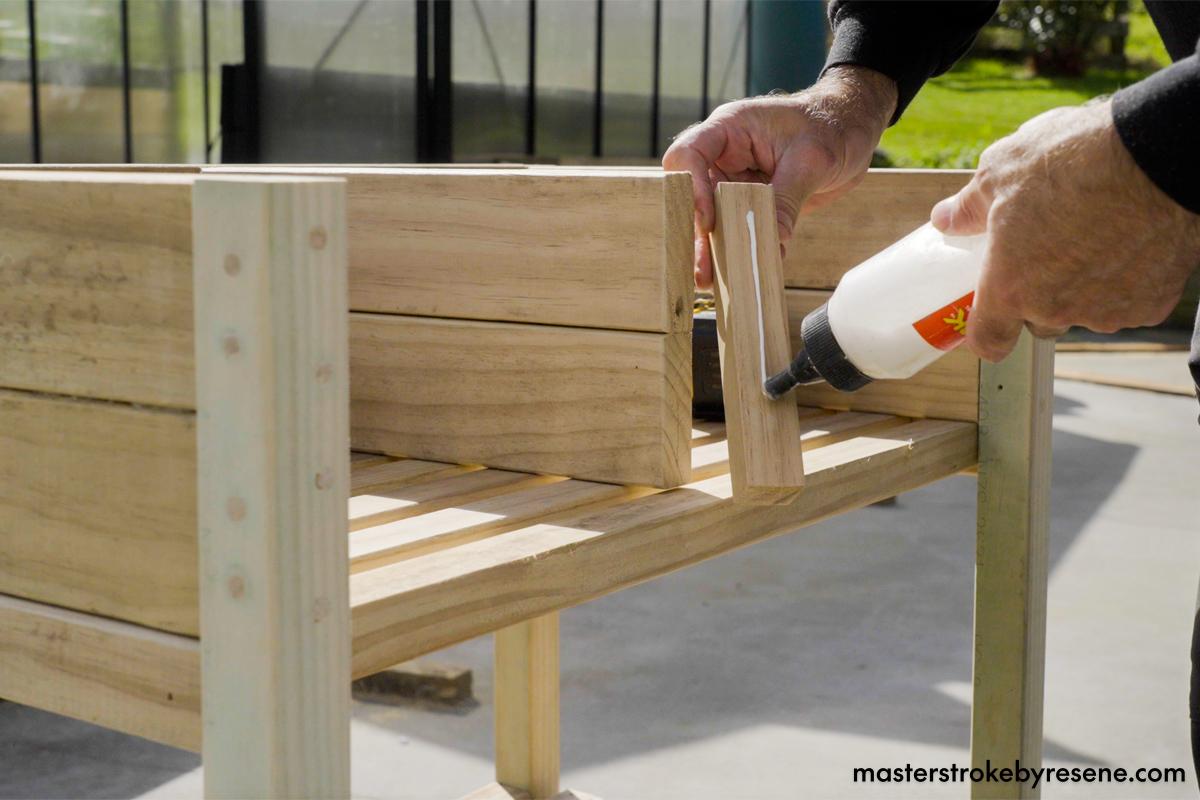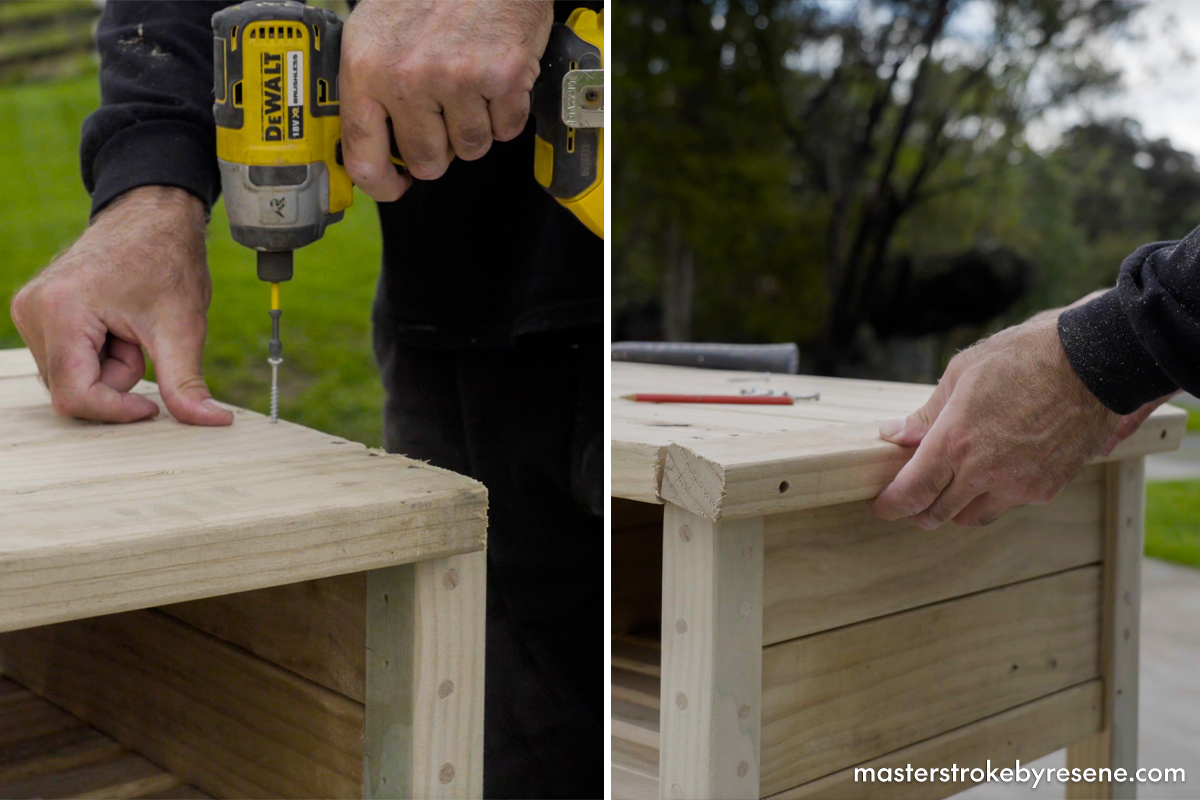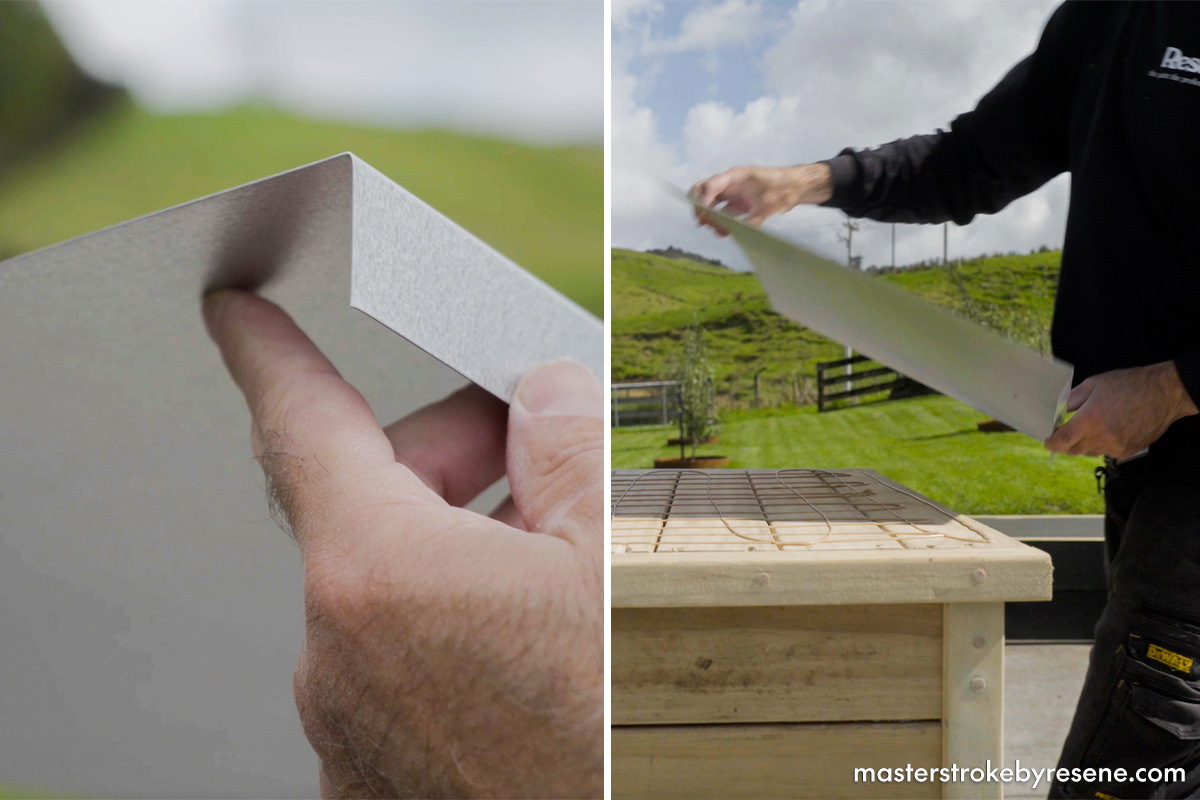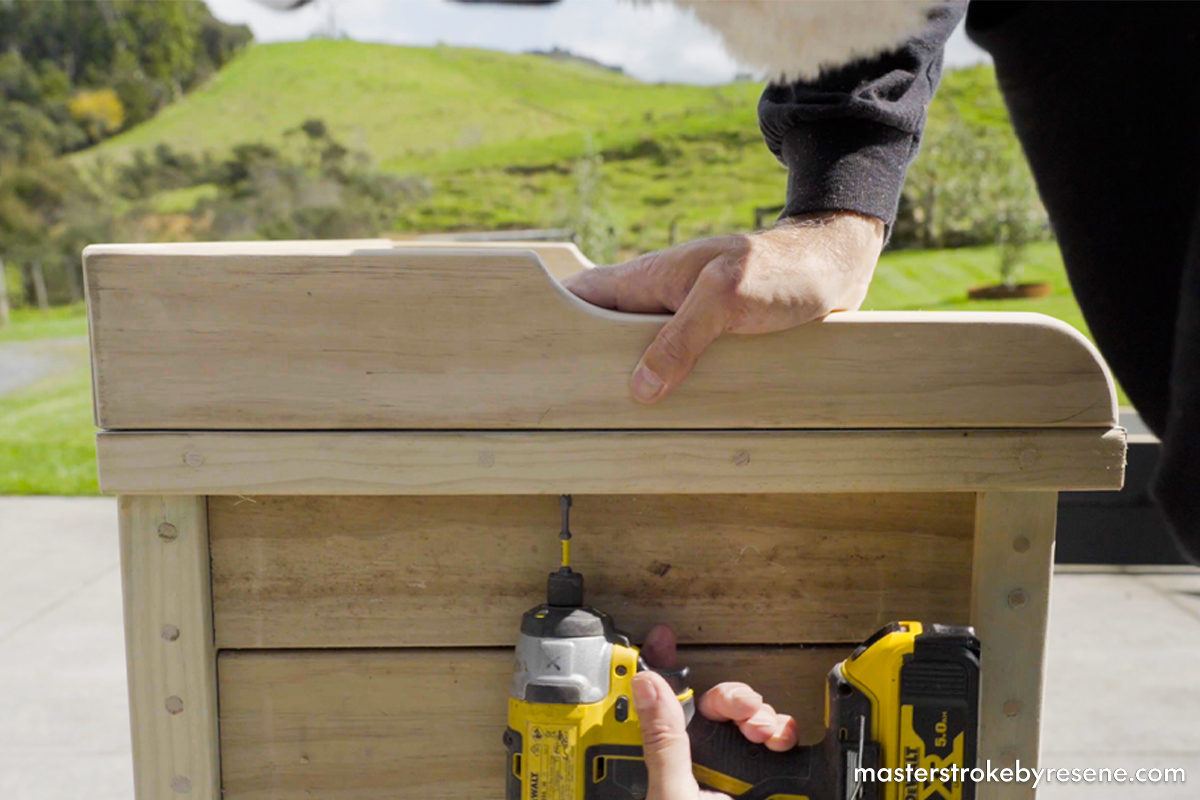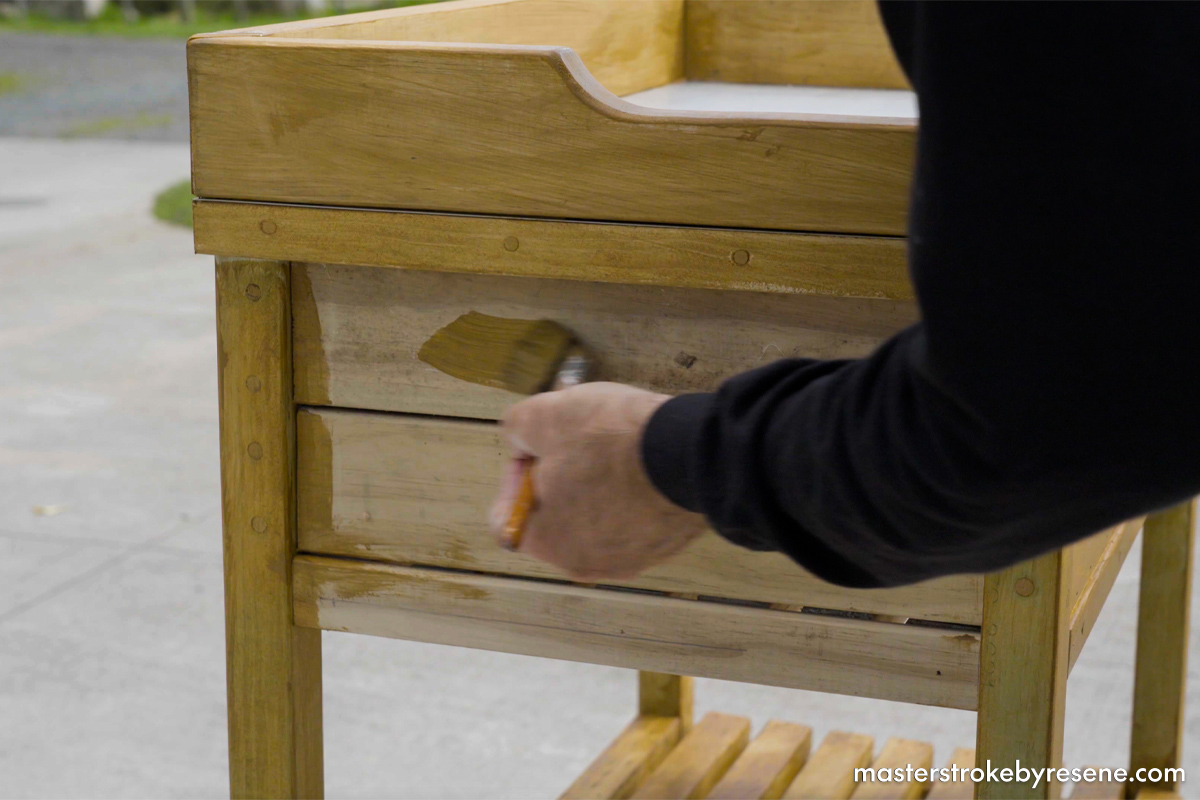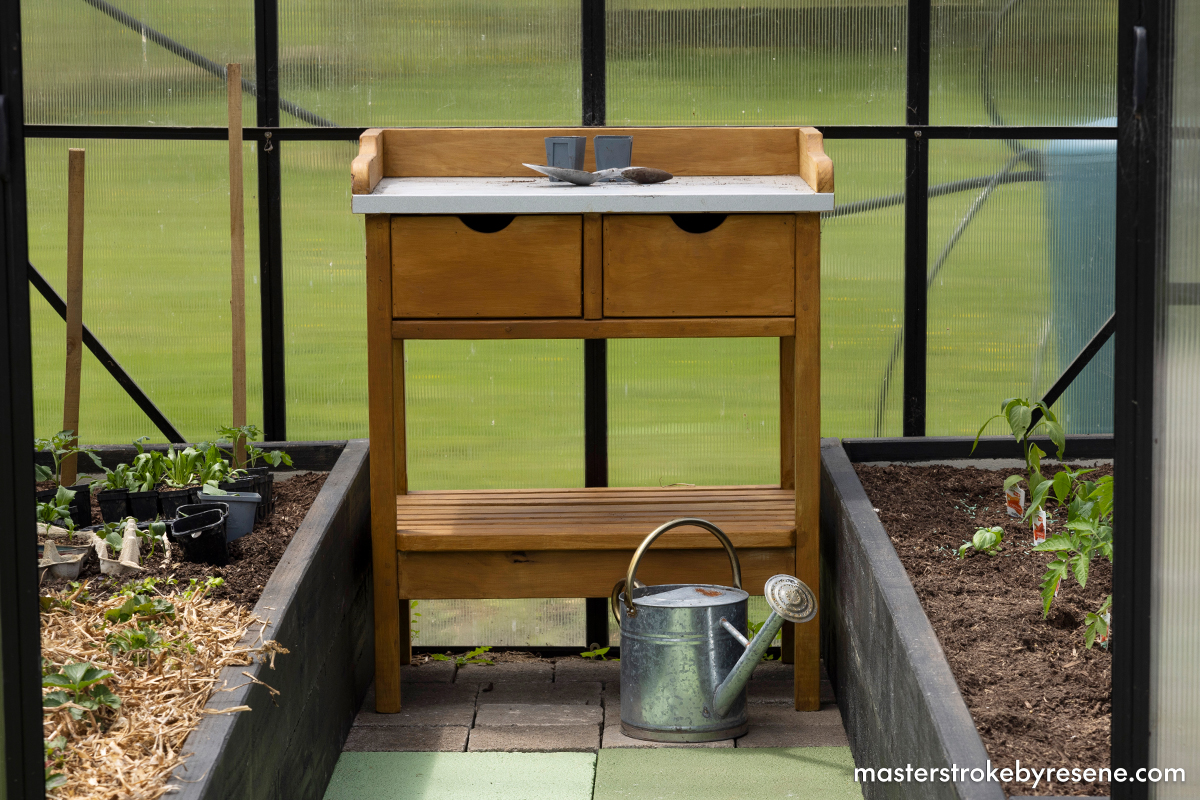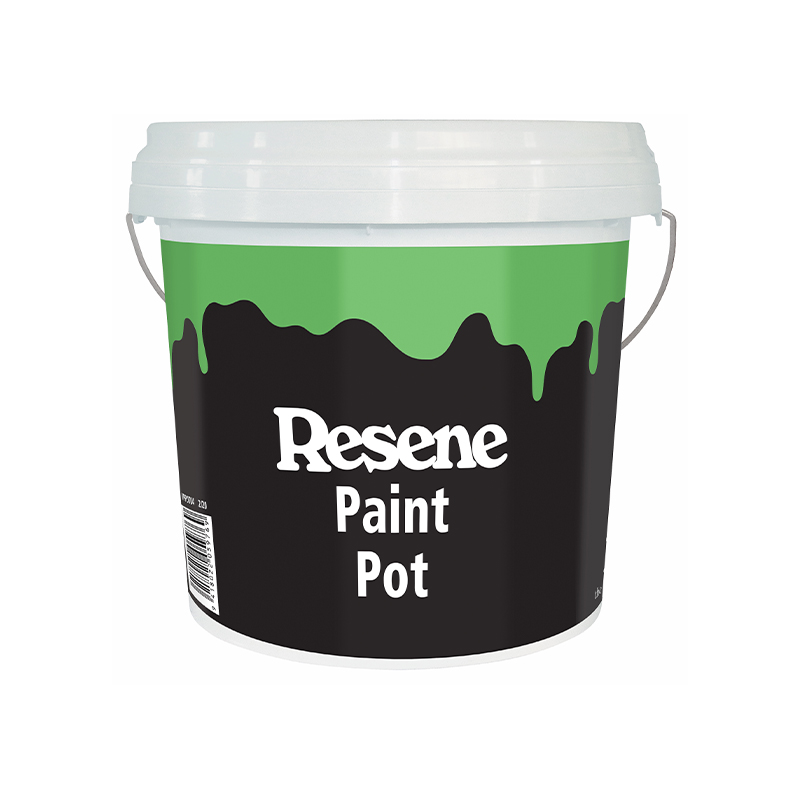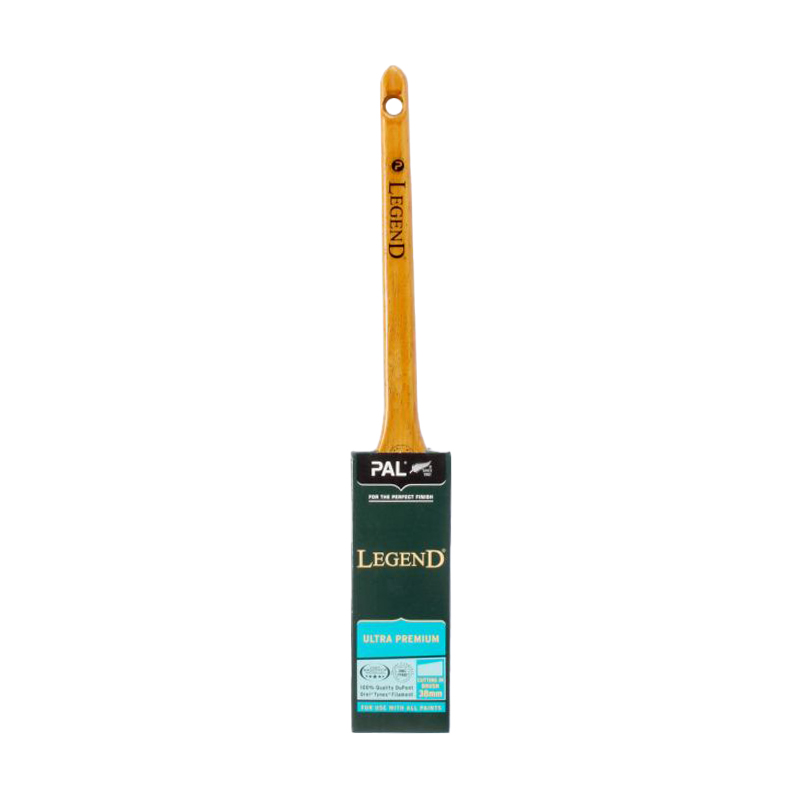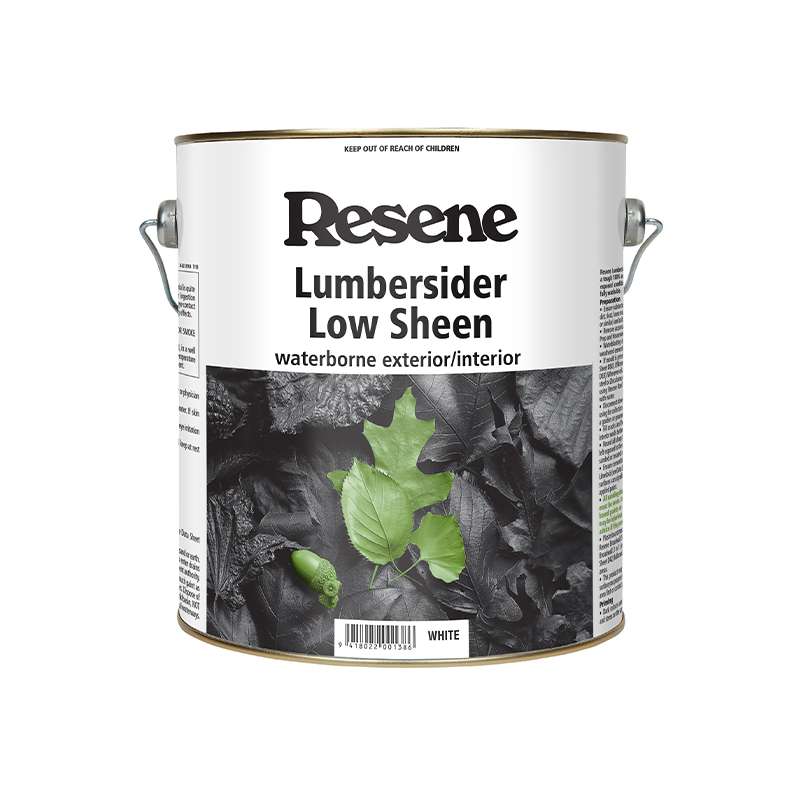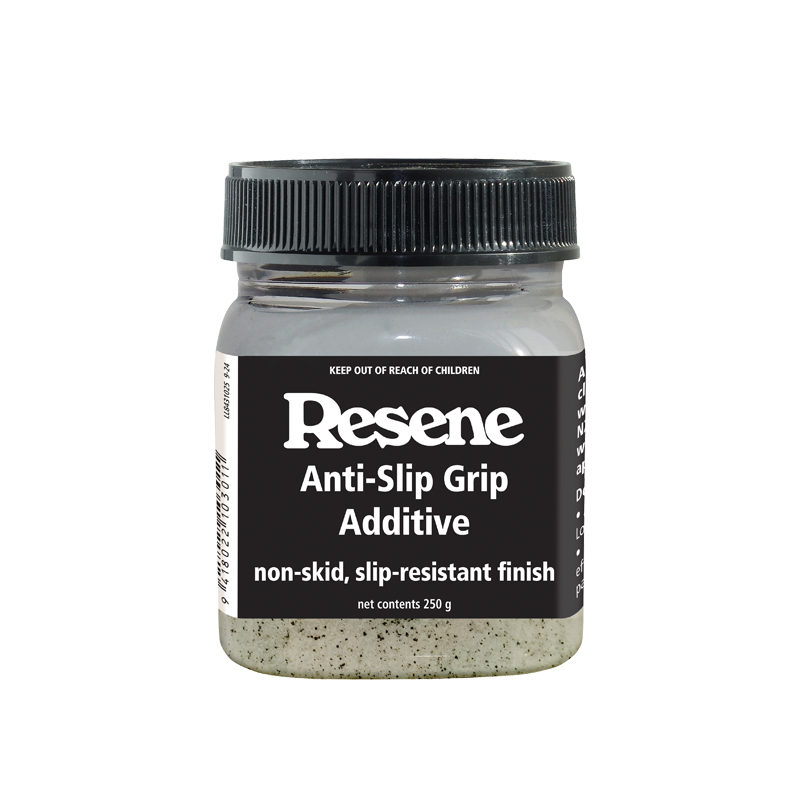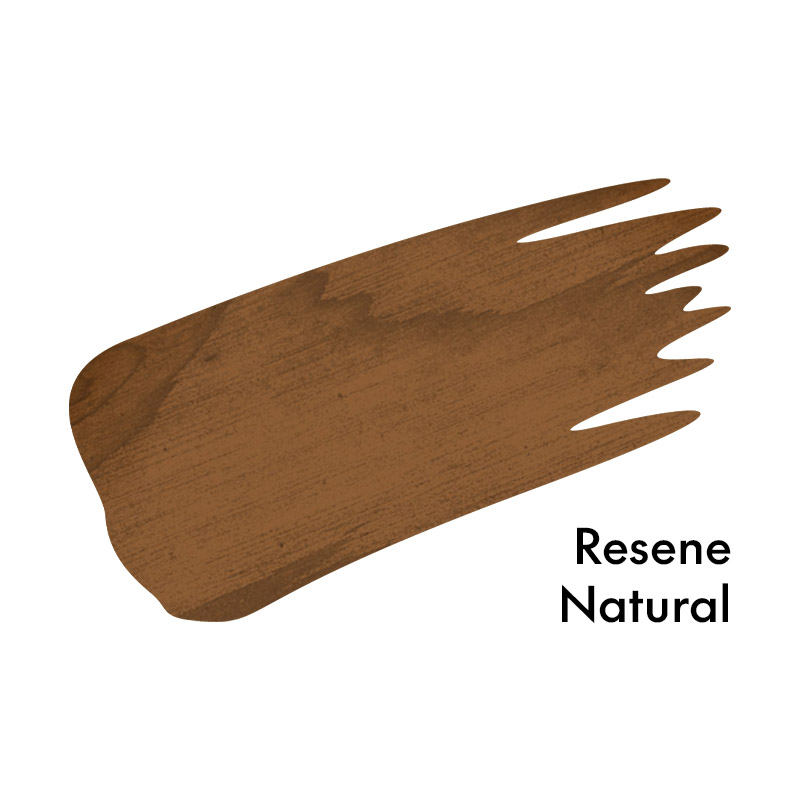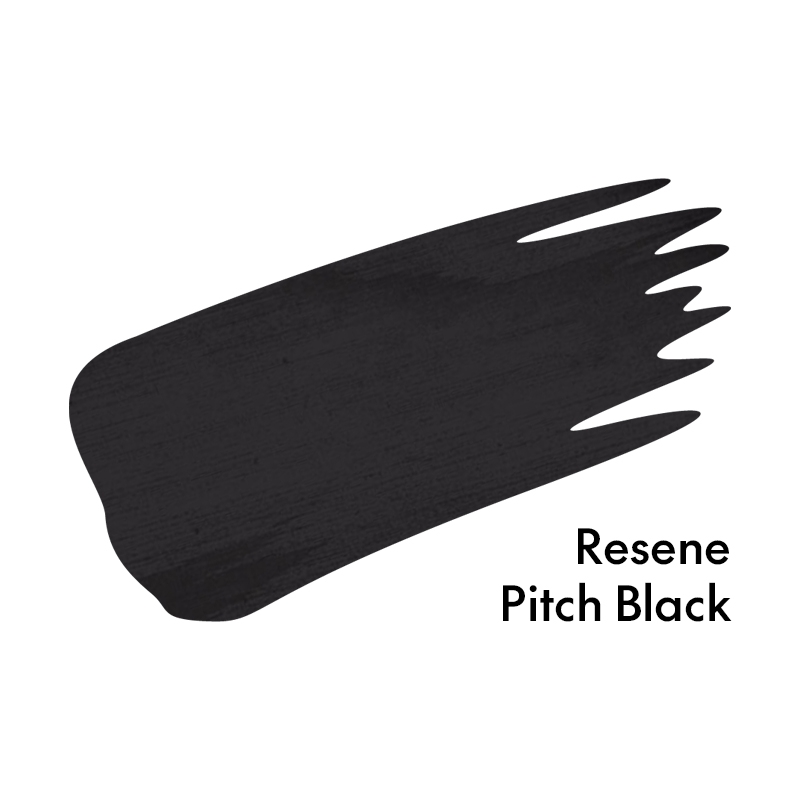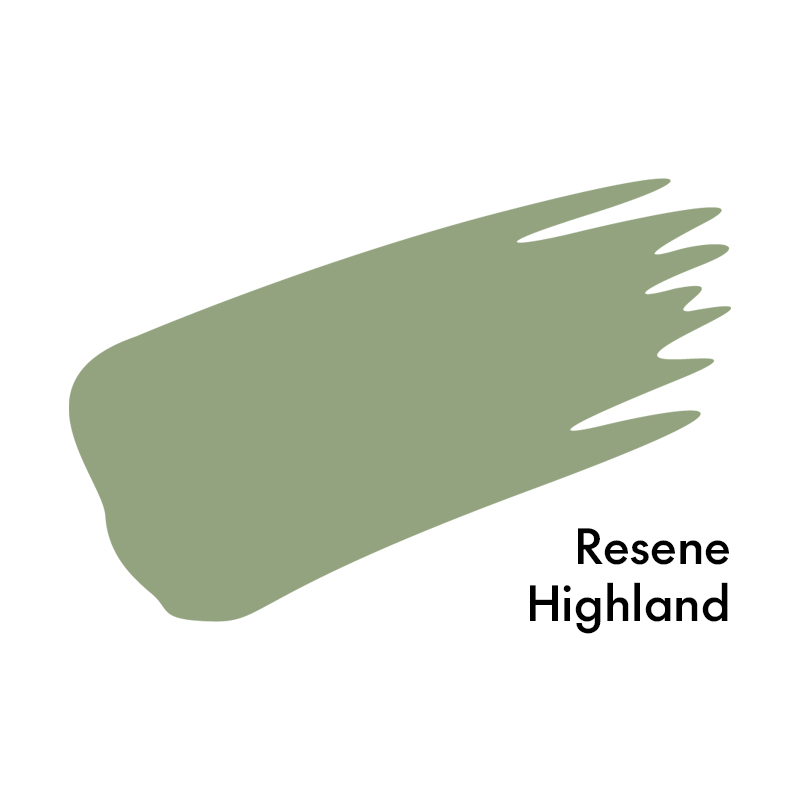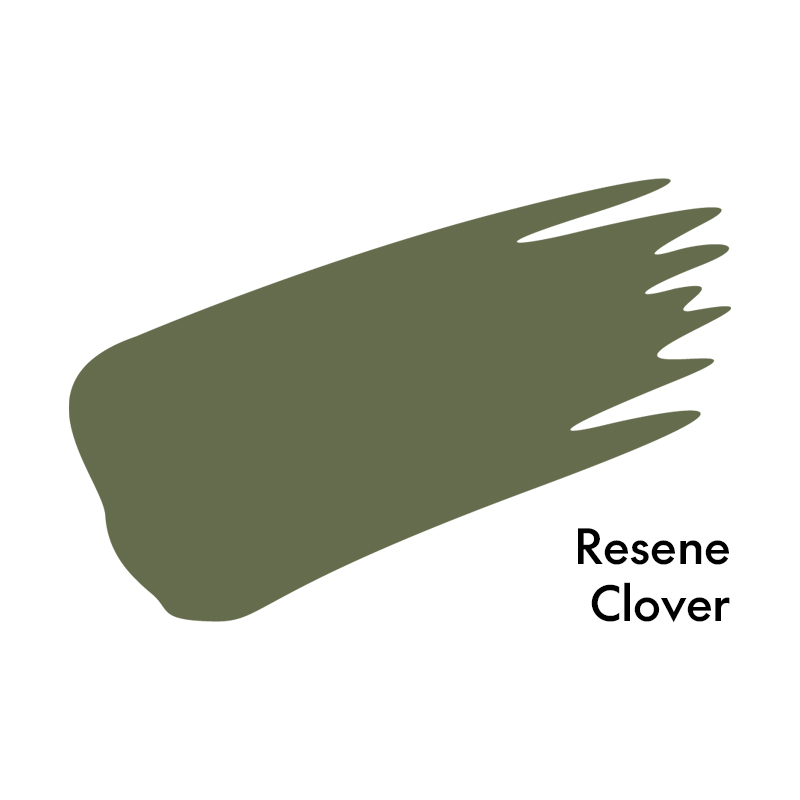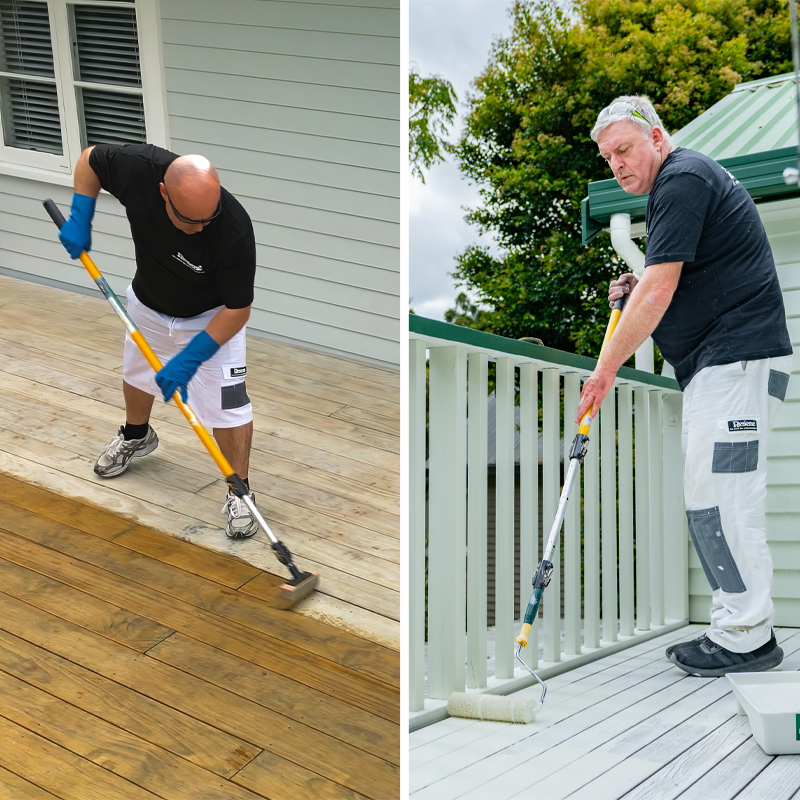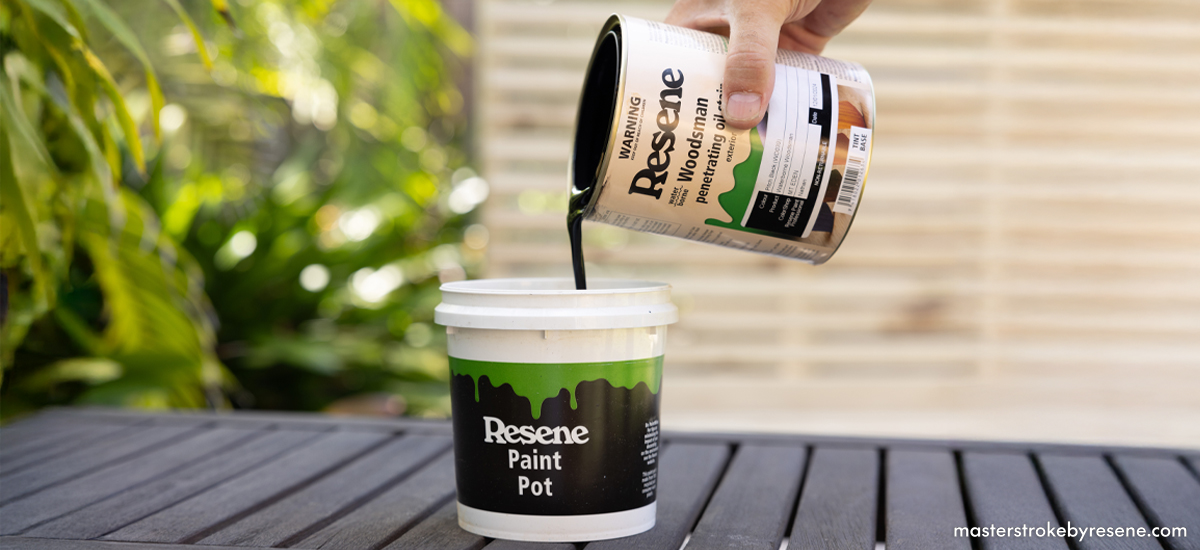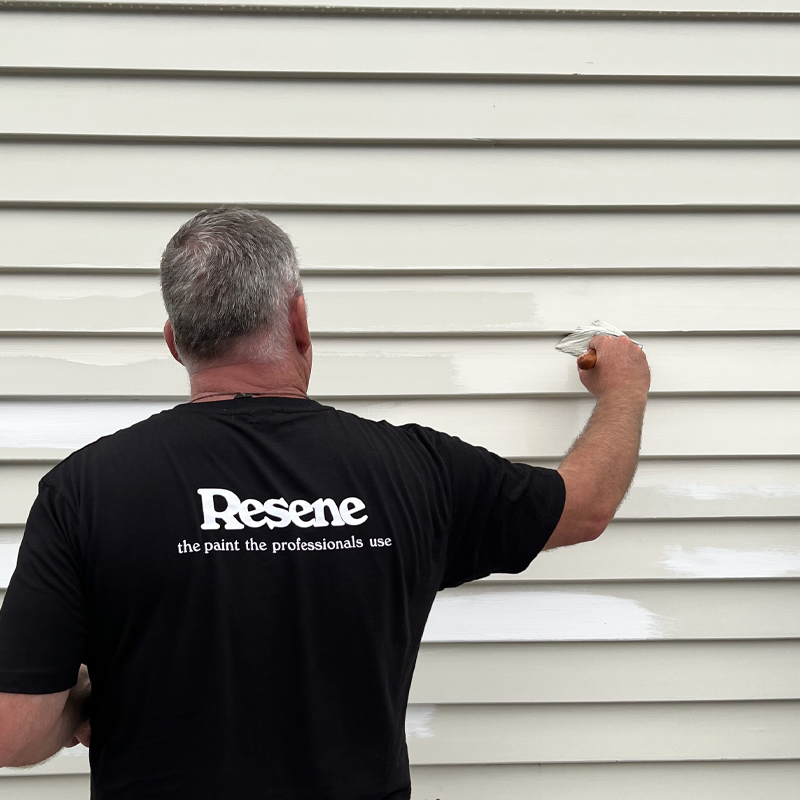Artist and keen DIYer Jae Frew has moved to the country with wife Jo and is loving the peace, privacy and picturesque setting of their new property.
One of the first projects Jae has sunk his teeth into is refreshing and rejuvenating an old glasshouse on the rural property, to give Jo a place to grow her vegetables. “She loves to grow and eat fresh produce and experiment with different plants.”
Within the glasshouse, Jae has undertaken three unique projects and finished them with Resene paint and stain for a polished, protected and professional looking finish. This includes two planter boxes and a potting station, as well as painting the cobblestones in a vibrant green palette.
Building a sturdy timber potting station is a gift to your future self, as it’ll save your back and knees from long term pain and strain from constantly bending down. It works equally well in the garage or garden shed and coating it with Resene Waterborne Woodsman penetrating oil stain in Resene Natural provides a professional looking finish and allows the beauty of the timber to shine through. Jae built Jo’s potting station “to have a central, tidy place to store potting equipment and to plant seedlings”.
Top tip: Jae says to measure twice and cut once (advice from his dad). Make sure the cuts are square and you are using a good glue. Also, the use of a good protective coating like Resene Waterborne Woodman is vital.

